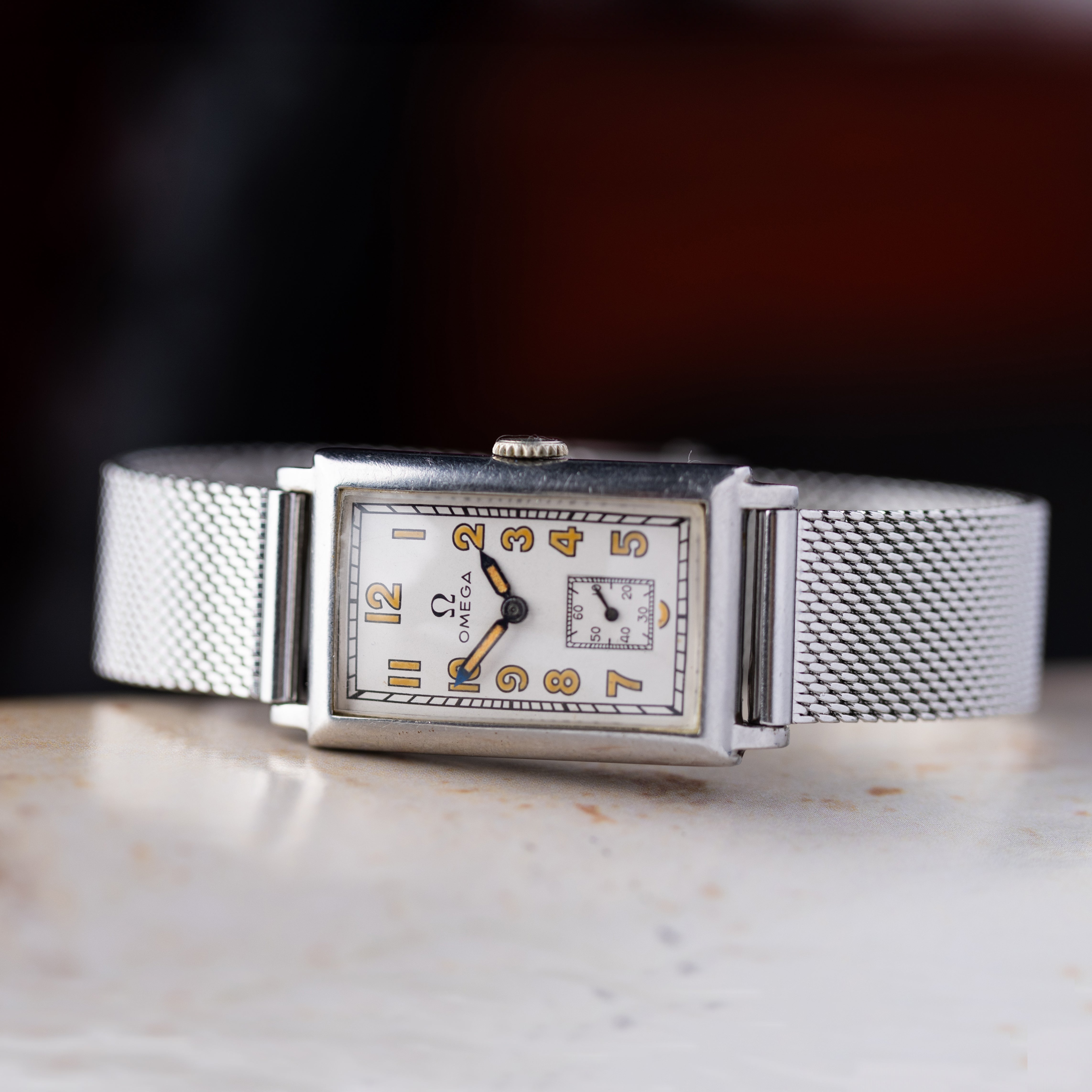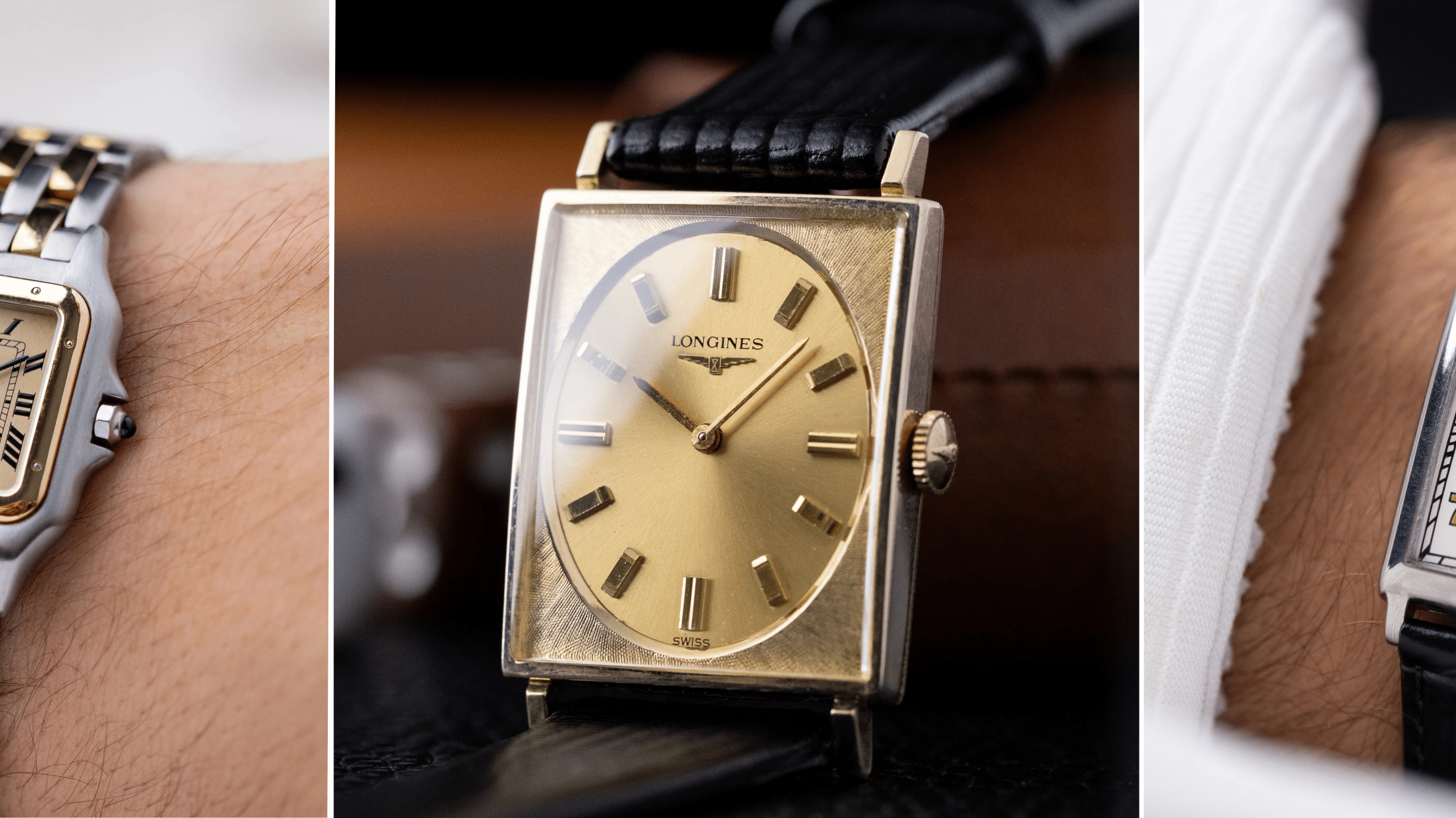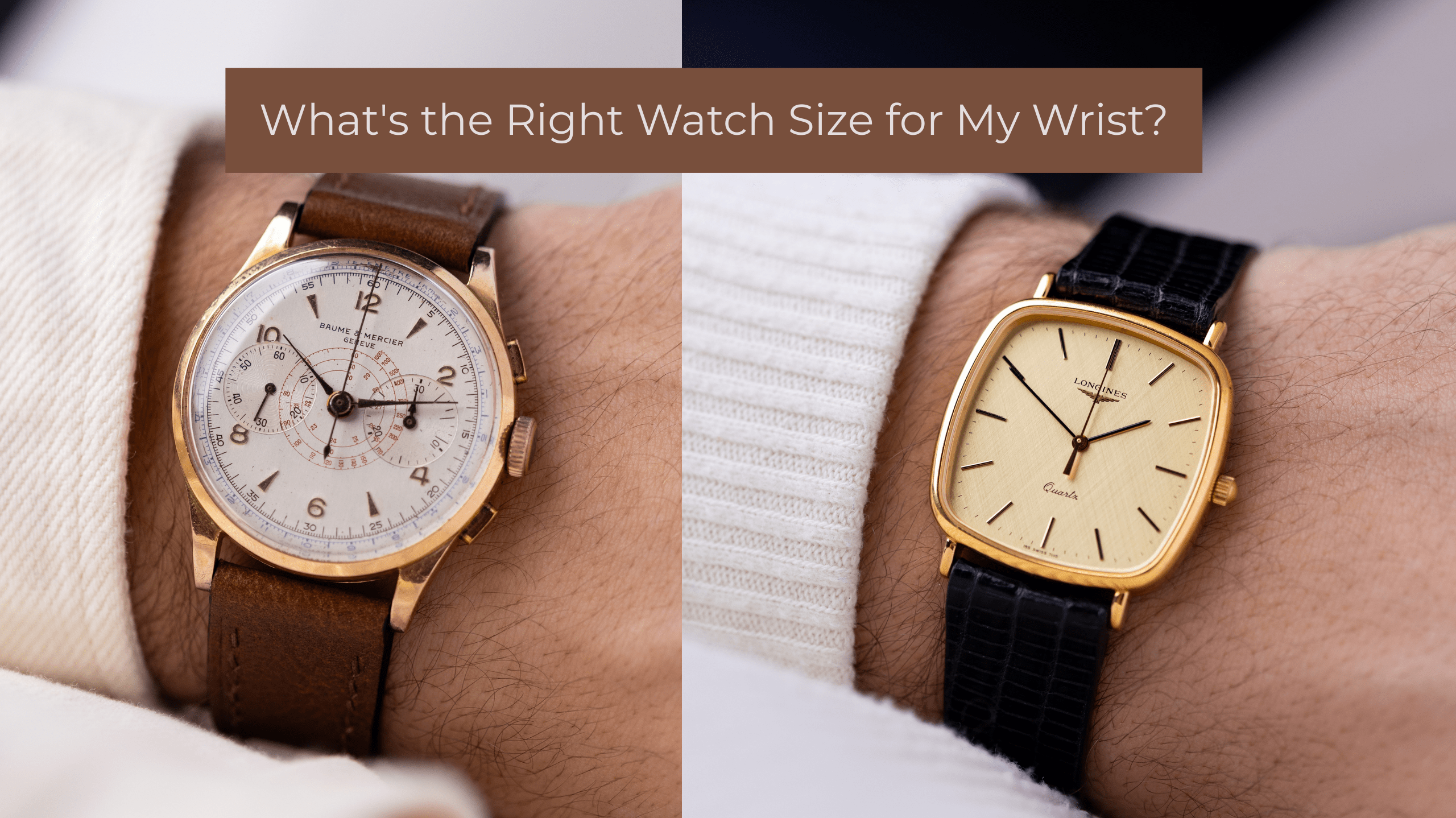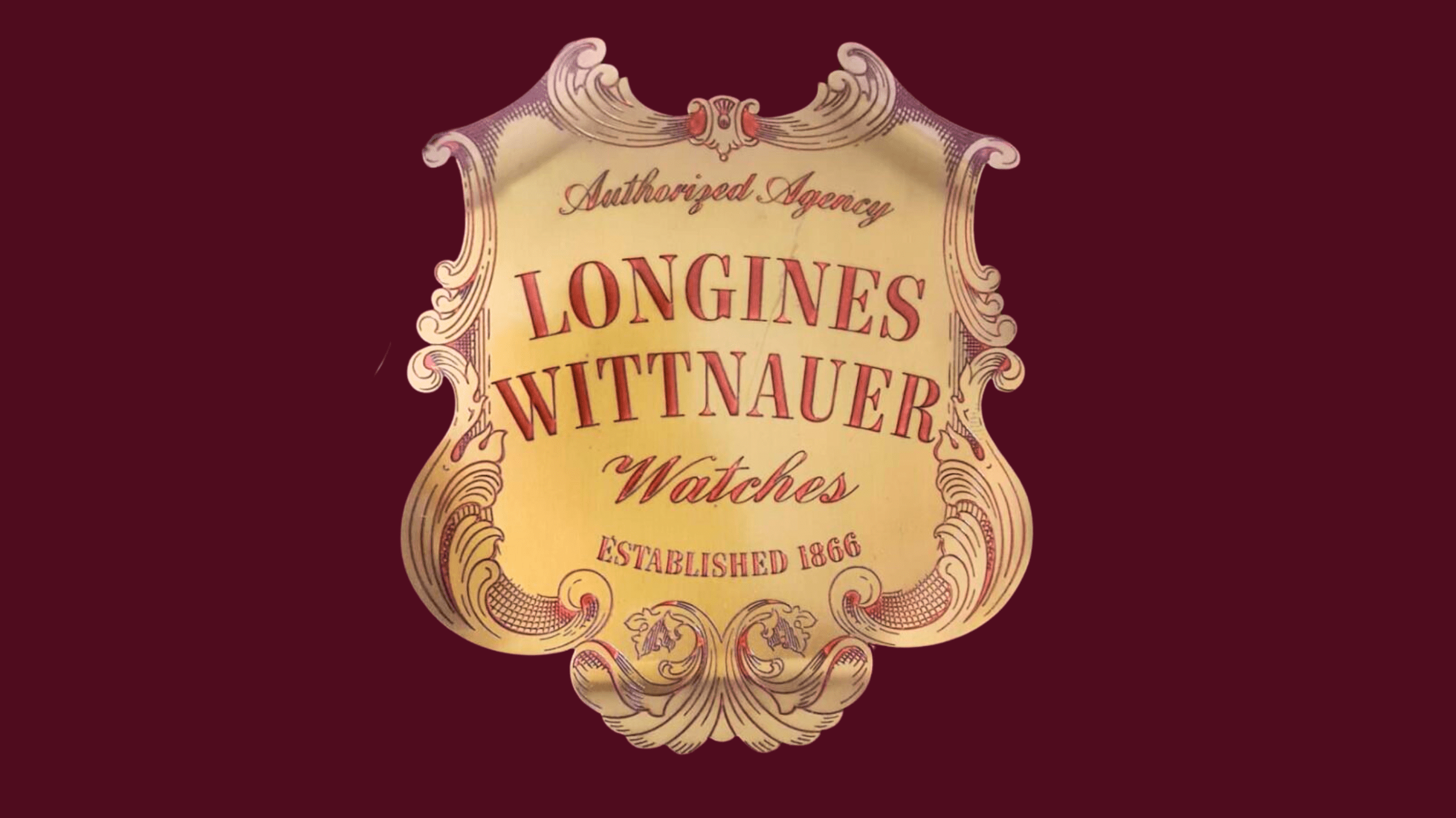Want a quick and easy way to date your Omega? We’ve got you covered. On our website, you’ll find a free Omega Serial Number Decoder that does the hard work for you. Just enter your serial number, and it will instantly give you the estimated production year based on trusted enthusiast charts. It’s a simple, no-hassle tool designed to help you connect with your watch’s history in seconds. Try it out and see what era your Omega calls home.
Why Knowing Your Omega’s Age Matters
Ever wonder how old your Omega watch really is? You’re not alone. Vintage Omega owners often feel a special connection to the history ticking away on their wrist. Knowing the production year of your watch can add a whole new layer of appreciation – you might discover your Seamaster was born in the swinging ’60s or your grandfather’s dress Omega dates back to World War II era. It’s more than trivia; it’s about connecting with your watch’s story. Maybe it was made the same year as the Moon landing or during a pivotal moment in Omega’s history. That kind of context can give you goosebumps, right?
Beyond the sentimental value, dating your Omega can have practical benefits. Collectors and enthusiasts often seek the year of manufacture to verify authenticity and originality. If you’re looking to insure, appraise, or sell the watch, the production year is a key detail. Certain famous Omega models (think Speedmasters from 1969) carry extra cachet when you know they’re from a milestone year. And let’s be honest, it’s just plain fun to say “My watch is from 1957” and imagine what the world was like back then. So, whether you’re a curious new owner or a seasoned collector, learning to date your Omega by its serial number is a rewarding little adventure through time.
Finding the Serial Number on Your Omega
Before we can date the watch, we need to find its serial number. Every Omega watch has a unique serial number (usually 7 or 8 digits long) etched somewhere on the watch. Think of it as your watch’s birth certificate number. But where exactly is it hiding? That depends on your Omega’s age and model. Let’s track it down step by step.
Check the paperwork (if you have it): The easiest place to find the serial is on any original documents. Omega warranty cards, chronometer certificates, or service papers often list the serial number. Of course, if you’re dealing with a decades-old vintage piece, chances are you might not have the papers handy. No worries – we’ll go directly to the watch itself.
Look on the case exterior: Take a close look at the back of your watch. Many modern Omega watches (starting in the early 1990s) have the serial number engraved on the outside – commonly on the caseback or on the underside of a lug (the little “arm” that holds the strap).

You might need to remove the strap to see if it’s engraved between the lugs at the 6 o’clock position. Grab a flashlight or loupe; those numbers can be tiny. If your Omega is from the last few decades, there’s a good chance you’ll spot the number without even opening the watch.
An Omega serial number engraved on the underside of the lug. Modern Omega models often have the unique serial number on the case exterior like this (sometimes between the lugs or on the caseback), whereas older models usually hide it inside.

Peek inside the case (for vintage models): If you don’t see any number on the outside, you’re likely dealing with an older Omega (which is often the case for true vintage pieces). In vintage Omega watches, the serial number is typically found on the movement – the mechanical engine inside the watch – usually etched onto one of the movement’s bridges or plates. Sometimes, Omega also stamped the serial on the inside of the case backitself. In either situation, you’ll need to remove the back of the watch to get to it. Now, here’s a friendly word of caution: opening a watch isn’t always straightforward. Those case backs can be stubborn, and you don’t want to slip and scratch that precious piece of history. It’s wise to have a professional watchmaker or jeweler do this part for you. They have the tools (and steady hands) to safely pop open the case. Once opened, you’ll see the beautiful movement and should spot a number engraved on it – that’s your serial number. Jot it down carefully. (It’ll usually be a 5 to 8-digit number, depending on the era.)
Serial number (10908804) engraved on the movement of a vintage Omega watch (circled in red). In older models, the serial is etched on a movement bridge like this, meaning you have to open the watch to find it. This number is the key to unlocking the watch’s production year.

Multiple places to check: Keep in mind, Omega has not been 100% consistent with serial number placement over the years. Most watches have it on the movement, but a few exceptions exist. Some models (especially certain quartz or non-chronometer models using ETA-based movements) might not have a serial on the movement itself – in those cases Omega put the number elsewhere, like on the inside of the case back or the exterior of the case. Also, Omega sometimes surprises us by engraving the serial in unconventional spots even on similar models. So if you don’t see it where you expect, don’t panic and don’t assume it’s fake right away. Do a thorough check or ask an expert. Depending on the model and year, an Omega’s serial number can be found on the movement, inside caseback, outside caseback, or on a lug. It’s like a little scavenger hunt, but the clue will be there.
Once you’ve found that magic number, give yourself a high-five – the hardest part (physically) is done. Now it’s time to decode what that number tells us about your watch’s birth year.
Decoding the Serial Number: What the Digits Reveal
Alright, you’ve got the serial number in hand. So, what can those digits tell you? Quite a lot, as it turns out. Omega has been using serial numbers since the 1890s to keep track of production. Over time, as production grew, the serial numbers increased sequentially. By comparing your watch’s number to known Omega serial number charts, you can figure out approximately when it was made.
Think of it like reading the rings of a tree to guess its age – but in this case, the “rings” are those digits on your watch’s movement. Here’s how it works: Lower serial numbers correspond to earlier years, and higher numbers to later years, in a mostly linear fashion. Omega started in the late 19th century with serials around 1,000,000 for watches made in the 1890s. Each subsequent block of serial numbers was used in roughly chronological order (with some overlap and exceptions, which we’ll get to).
Let’s break down a few examples to make it real:
-
If you have a very early Omega with a serial number around 1,000,000, that actually dates way back to about 1894 – the dawn of Omega as a watch brand. Those are true antiques!
-
Jump ahead a bit: a serial around 8,000,000 would place production roughly in 1934, right in the interwar period. Imagine an Omega ticking on someone’s wrist in the 1930s – pretty incredible.
-
A serial in the 13,000,000s? That corresponds to around 1952. Omega was booming in the post-WWII era, producing classics like the early Seamaster and Constellation during the 1950s.
-
How about 17,000,000? That lands around 1959, when rock ‘n’ roll was in full swing and Omega was supplying watches for the jet age. If your Seamaster’s serial is 17 million-something, it likely rolled out of Biel, Switzerland circa ’59.
-
Now, 25,000,000 is approximately 1967. That’s a special time – late ’60s. For instance, the legendary Speedmaster “Moonwatch” models from the mid-to-late ’60s fall in this range (more on Speedmasters in a moment). Your watch might share a birth year with the Summer of Love.
-
Moving into the modern era, serials kept climbing. By 40,000,000 you’re in the late 1970s. By 45,000,000 you’re in the early 1980s. Omega was transitioning through the quartz crisis in those years, but still issuing serial numbers sequentially.
-
Serials in the 50 millions span the mid-1980s into early 1990s. And by the time Omega hit 84,000,000, it was around 2008.
Special Case: The Speedmaster’s Separate Serial Saga
If your Omega is a Speedmaster (the famous Moonwatch and its cousins), you might find yourself scratching your head when comparing serials to the standard charts. “Why doesn’t my Speedy’s number make sense on this table?” Don’t worry – it’s not you, it’s Omega. The Speedmaster line has its own serial number sequence for a good chunk of its history. In other words, Omega treated Speedmasters a bit differently than the rest of the family when it came to numbering.
Here’s the scoop: The Omega Speedmaster, being the icon that went to the Moon, was important enough to get special treatment. Vintage Speedmasters (especially those from the 1957-1960s era) often fall outside the regular timeline if you try to use the generic chart. Omega gave the Speedmaster range a separate block of serial numbers unique to Speedy models. So a Seamaster and a Speedmaster made in the same year might have very different-looking serials.

For example, a Speedmaster from 1969 (around the Moon landing time) might carry a serial in the 28 million range, whereas a Seamaster from 1969 might show a 31 million range – that’s because by the late ’60s, Speedies weren’t following the exact same increment as other models. Enthusiasts have compiled separate Speedmaster serial number charts to help Speedy owners date their watches correctly. If you have a Speedmaster, make sure you’re looking at the Speedmaster-specific chart – using the standard one could mislead you by a year or more.
Here’s a neat example: The very first Speedmaster from 1957 had a serial in the 14-million range, matching its debut year. By the mid-1960s, Speedmasters were in the 22-24 million range while other Omegas (like Seamasters and Constellations) with similar numbers might correspond to a slightly different year. Omega introduced a new numbering system for Speedmasters around 1975-1976, and eventually by 1977 they merged back toward the unified system (for instance, there’s a big jump where post-1977 Speedies leap to 39 million+ and then later to 48 million, aligning with the late ’70s/’80s era). The details can get a bit granular, but the key point is: if you have a Speedmaster, use a dedicated Speedy serial chart or database. Many online tools and forums (like the famous Moonwatch-only resources) provide these.
The good news is that aside from Speedmasters, most other Omega lines (Seamaster, Constellation, Genève, De Ville, etc.) all follow the main serial progression. So for those, the standard charts apply cleanly. It’s just our moonfaring friend that plays by its own rules for a while. Once you account for that, dating a Speedmaster is just as straightforward – just a different reference table.








